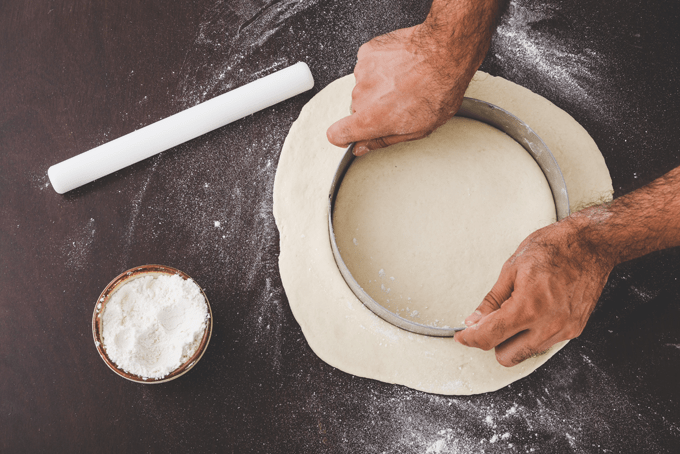Last Updated on July 3, 2021 by Dr Sharon Baisil MD
The glycemic index of wheat is 54, placing it in the low Glycemic Index foods category. Wheat is packed with 12.2% of fiber and so it is considered a good food for diabetes.
However, wheat has a higher Glycemic Load and so it should be taken only in moderation if you are on diabetes medications or insulin.
Moreover, you will be glad to know wheat grains are rich in fibers and proteins that have numerous health benefits.
Wheat has three layers – bran, endosperm, and germ. The bran layer is packed with a surplus amount of insoluble fibers.
The benefits bestowed by these fibers are:
- Fibers enhance the activity of git bacteria that further aids digestion
- Makes you feel full, hence impelling you to eat less frequently and assisting in weight loss
- Good for health as it controls cholesterol
- Reduce the risk of colon cancer
- Lutein protein found in wheat is found good in promoting better eyesight
- They minimize the chances of a rise in good sugar levels after a meal
Other beneficial nutrients such as selenium, manganese, copper, phosphorus, and folates are also retained by whole wheat kernels in trace amounts.
The only disappointing drawback of consuming whole wheat flour is the presence of gluten. Gluten is a protein found in wheat and rice.
The majority of people are known to develop an allergy to this protein. The possible side effects of gluten are bloating, inflammation, nausea, and stomach aches.
6 Diabetes-friendly alternatives to Wheat Flour

If you are also someone who is allergic to gluten and finding it difficult to get health-friendly chapatis on the plate, then here are super seven alternatives for you.
Toggle from health-robbing to health-enriching flours, today. Read below.
1. Ragi flour
A very popular flour in Indian villages. The cities have gone modern bit thankfully villages hasn’t lost the natural benefactions yet. Natural non-refined things are always healthy and so is ragi flour.
Best-suited flour alternative for diabetics as well as for those who are allergic to gluten. It comes loaded with antioxidants and dietary fibers. Neither making your weight go uncontrolled nor the blood sugar levels. Both are safeguarded.
Love cakes and cookies? Fortunately, you can use it for baking purposes too. The icing on your cake would be that ragi flour is a preferable choice for individuals whose body is intolerant towards lactose.
2. Bajra flour
Doesn’t the name remind you of Rajasthan? There is no harm in turning on to traditional meals again if you somehow have eliminated them in the modern race of life.
Similar to Ragi, Bajra flour is also gluten-free and full of fibers. These two traits are enough to title it diabetes-friendly flour. Being packed with amino acids and antioxidants, they are sure to shower good health upon you.
All three levels – blood sugar, cholesterol, and blood pressure, are rendered well-controlled.
3. Jowar flour
Interestingly, jowar, bajra, and ragi belong to the same category known as millets. They just don’t share a name, they share similar health benefits too.
Jowar is jam-packed with a plethora of nutrients including calcium, iron, phosphorus, vitamin B, and antioxidants to keep you away from blood sugar spikes.
4. Quinoa flour
Quinoa tastes a bit bitter but this bitterness bows down in front of other advantages. The gluten-free grains coupled with an ample amount of fibers make quinoa unparalleled food for diabetes.
This flour can be used to make several dishes. If you were looking for a replacement for regular wheat flour, then now you found one.
4. Soy flour
Easily available in the market, comes enfolded with proteins and vitamins. Nutrients like manganese, folates, iron, and zinc are also present.
The best way to toss this into your daily diet is by mixing 30% soy flour with regular wheat flour. This enhances both health and taste.
5. Buckwheat flour
You might be knowing this super healthy flour by the name, “kuttu ka atta“. It is brown in color and has a nutty flavor. People generally consume it during fasts as it a pseudocereal.
The flour is free from gluten yet enfolded with a handful of nutrients. It provides an ideal choice for better heart health and diabetic health. From minerals like iron, manganese, zinc, and magnesium to folates, vitamins, and antioxidants, all reside in this.
Not only it improves insulin sensitivity, but it also aids in reducing the risk of cancer and inflammation. Either muffins or parathas, make anything with it.
6. Cornflour
How can one forget “makke ka atta”? The staple grain in villages of Punjab and Haryana.
Made from finely ground cornmeal, cornflour is an excellent gluten-free alternative. Its benefits for diabetes are due to the presence of fibers, vitamins, and antioxidants.
Furthermore, this flour enhances eyesight, improves heart health, and good for skin ailments. A variety of cuisines can be prepared using it.
References
- https://www.sciencedirect.com/science/article/abs/pii/S152166160300278X
- https://care.diabetesjournals.org/content/3/1/187.short
- https://www.cambridge.org/core/journals/british-journal-of-nutrition/article/characteristics-of-some-wheatbased-foods-of-the-italian-diet-in-relation-to-their-influence-on-postprandial-glucose-metabolism-in-patients-with-type-2-diabetes/3A31DC1165F91CC3B7FC32F39AA825EC
- https://link.springer.com/content/pdf/10.1007/s00394-016-1168-2.pdf
- https://www.ncbi.nlm.nih.gov/pmc/articles/PMC5397290/









is wholewheat low in GI
Yes, Whole wheat has a lower GI due to the high fiber content